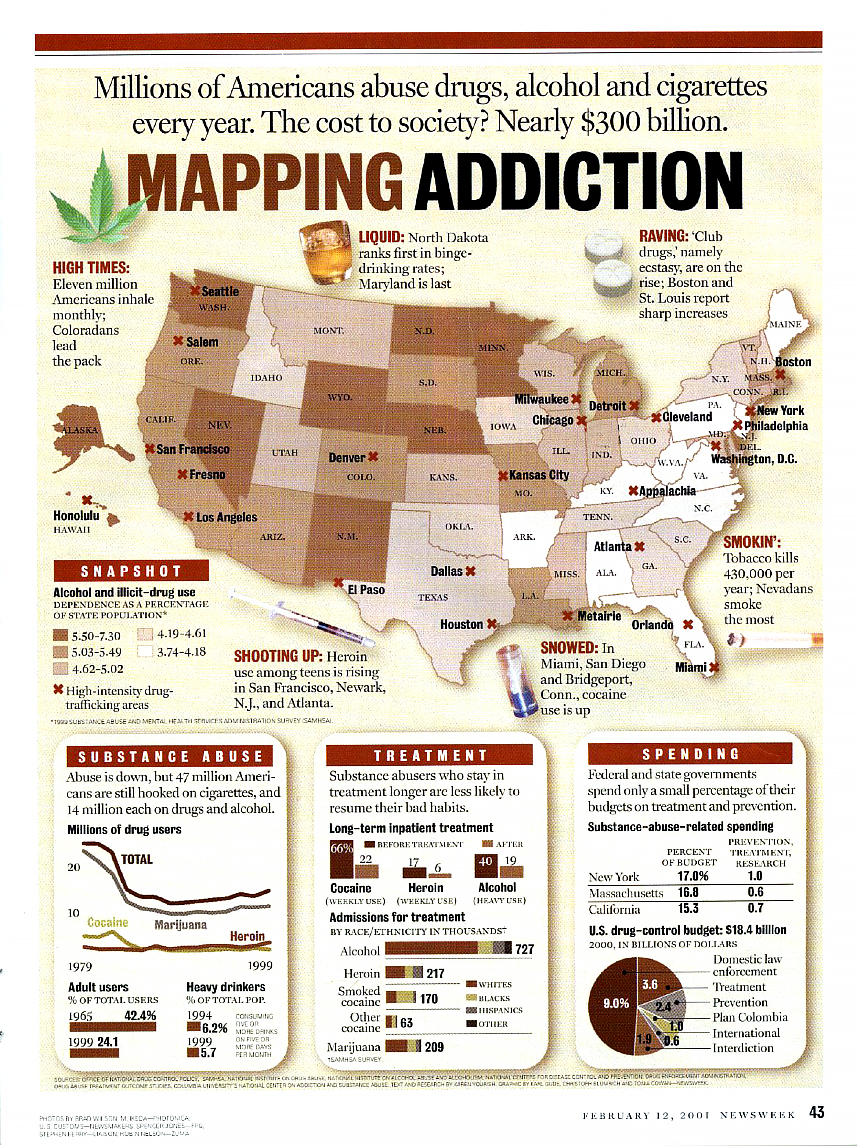Karl Gude is the founder of Gude Thinking and consults with organizations on the topics of Infographics and Creativity. Karl is an award-winning Professor of Practice instructor fr om Michigan State University, where he taught both of these disciplines. Prior to joining the academy, Karl was the Director of Information Graphics at Newsweek magazine and The Associated Press.
om Michigan State University, where he taught both of these disciplines. Prior to joining the academy, Karl was the Director of Information Graphics at Newsweek magazine and The Associated Press.
Karl is a data artist and creative thinker who has consulted with numerous companies on the topics of visual communication and creative thinking. He has presented at three TEDx talks, at Harvard University’s “Political Analytics Conference” and more than once at the South by Southwest (SXSW) technology conference on the “Power of Visual Storytelling.”
Karl Gude talks exclusively to tksajeev about the role of information graphics
Visual storytelling. Can you explain the power of about it?
The simple power of visual storytelling is that it can convey multiple levels of information in a fraction of an instant compared to verbal storytelling alone. Suppose an organization was had purchased another organization and was restructuring it’s operations. They wanted to explain all that was going to be impacted by this change. Departments are going to merge with others, divide into more departments, and new ones are going to come into being and others eliminated. New personnel will be added, others will be eliminated, etc. etc. A lengthy story will be written, forcing readers to imagine all the changes and relationships, but a flowchart, either static or interactive, could visualize all this at a glance and, with the interactive version, elements could be expanded on with added detail. Of course, it would have to be expertly executed or the user will become frustrated and confused.
What is the basics of a good information graphics?
The basis of a good information graphic is Human Centered Design, that is thinking first about the end-user of the information graphic and incorporating what they want to know, what they already know and, if for use promoting or advertising products, what would persuade them into purchasing that product before drawing, designing or writing anything. Too many visual communicators rely entirely on their own knowledge and instinct and ignore their audiences assuming what interests them will also interest their audience. There’s always going to be a degree of this, but research into what readers would like and need to engage with your graphic story is important. For much of my career I am merely considered the visual first, then contact information by my research into the topic and what I think would be interesting to know and nothing else. Over the years I learned that many of my infographics weren’t engaging people or giving them what they wanted to know. Sometimes we can find out what the readers want to know simply by asking them, but other times they don’t know and we have to read between the lines of what interests them and give them what they didn’t know they wanted. For instance, when an important person here in America was killed in a small plane crash most of infographics designers just explained all the stuff that was typical, such as the route of the plane, the timeline, who sat where in the aircraft, that sort of thing. But Time magazine took a whole different approach. Since people were shocked by this person’s death, they wanted to know how such a crash could have happened. So, they explained how crash investigators were going to determine what happened to that little aircraft by illustrating a variety of elements on the aircraft and explaining what investigators would determine from that, such as how the propeller was bent and what the last readings on the instrument panel were. Brilliant.
Some charts look visually appealing but complicated. Do you think information graphics should be simple and easy to understand?
I have absolutely no problem with charts, maps, or any other sort of infographic being complex. Not all info graphics can be quick studies that convey everything at a glance. Some topics just require study and reflection and a well-done infographic that respects the reader by engaging their intellect, satisfying their curiosity, and conveying understanding will earn their appreciation, as opposed to an infographic that simply tries to tap dance and delight through fluffy information and fancy imagery. I’m sorry to say I’ve made those. There are artists that want to show off their drawing and design abilities, whether they have them or not, and that can get in the way of the information. Sure, an info graphic should be magnificently drawn, if needed, and designed, but the information should come first and drive those two. Content-driven design, not design-driven content.
Karl’s early work.The Statue of Liberty was made by hand using a pen and brush with ink in 1986
Do you think information graphics is going to occupy most of the space in newspapers in the future?
Who knows whether or not information graphics are going to occupy much space in news media in the future. The world of media and communication is changing so fast that it’s hard to keep up with it all. The use of info graphics has plunged since the 80s and 90s and that’s because newspapers found they were too expensive to produce. And, in the early days of the Internet, technology wasn’t there to allow such content to be displayed in any meaningful way. Nowadays, that technology exists but not many schools teach how to use it to make information graphics and there are not many people know how to use them in the professional world overall.
Actually, very few schools of journalism teach how to make info graphics in any fashion. Info graphics journalists are mostly self-taught and not all of them are good. Though they mean well and try their best, they just don’t have the market basket of skills they take to produce. If you’re a single-person department, that person will need to know how to research, write, design, sometimes illustrate, and use technology expertly to produce a competent info graphics and hiring a team of individuals who are capable in all these areas is expensive. Hopefully, managers will send their infographics staff out for relevant professional development to learn current methods.
As a reporter once told me, “They’re just too hard to make” and they weren’t even going to produce it, simply contribute to the content! What they meant was when they are writing a story they can simply say, for example, that a car was hijacked on such and such street and the driver drove to the next town. But, an info graphic has to show the exact spot where the hijacking occurred and the precise route the vehicle took to get to its destination. It also has to show the model and color of the vehicle. A lot more information is needed than what can be spoken in an article.
What are the new trends in information graphics?
Technologies are going to come and go and, if a technology helps convey information easily and well, people will be comfortable interacting with any new interactive forms, but the timeless building blocks of info graphics must always be present: Human Centered Design, good writing, good research, and good design that teaches the reader in an engaging way. Technology and trans are going to change all the time, but always be the same, looking for good stories that inform and teach.
What is the future of print information graphics?
Print Info graphics are created in a computer, but the products they are displaying that can be either through the Internet or in print. I believe print will always be around in some form, but a lot of variables come into play. Does the publication believe in them, care about them, or can they afford them? Are there people who know how to make them in a meaningful way who aren’t just information decorators? As long as we have our eyes, I believe there will be print products to look at. It is possible that one day paper will just become too expensive to produce, either environmentally or production-wise, and if that day comes I assume people will find ways to create them on anything solid that people can look at and pick up.
TEDX/2010/Karl Gude
Can you tell us about the different approaches in graphics?
Here are a few things people should consider when planning an infographic, somewhat in this order:
Who is your audience? What is relevant to them?
What is your goal? What is the purpose of your infographic?
What is your story? What simple message will resonate with your audience?
What is your content? List five key visual points that support your goal?
What are your visuals? How can your key points be visualized in the most compelling and informative way?
What is your design? What skills do you have?
Which tools are mostly used in creating graphics?
I know several people still using Illustrator and other drawing software, InDesign, Photoshop, pen and brush, and real materials, like sticks and torn paper, and I still use all of those, and many are using a variety of interactive products for the web, while still others are using any of the many infographics creation products for both static and interactive graphics that exist on the web, some free.
New York Times and Washington Post are the front runners in information graphics. How different are they compared to each other?
This would take some study. I don’t know. But I will say that they seem to know their audiences very well. I’ve lived in New York for 25 years and read the New York Times regularly. They, the Washington Post, work hard to ensure Infographics are clear, free of gratuitous embellishment, and that their content doesn’t speak down to readers, it lifts them up by helping them learn about complex things they didn’t even know they were interested in.
USA today has always been a great newspaper and was a trailblazer in the early days of Infographics. To me, their audience has always been people on the go, people going to airports and train stations. So, these are people who don’t have time to really engage with complex content, so their info graphics tend to be quick bites of simplified, very embellished and colorful information.
Which was your best infographics and how you conceived it?
I’d rather talk about a big mistake I made with an info graphic. People learn more from my mistakes! I have certainly made my share of them and here’s an example.
Addiction map US Newsweek
We were doing a cover story for Newsweek on drug addiction and I decided to map out the cities where the most addictions occurred. Unfortunately, the list of cities I received during my research was not what I thought. The Drug Enforcement Agency (DEA) here in the US sent me a list of cities designated “High-intensity drug trafficking areas,” or so I thought. We received a letter from the mayor of one of the smaller cities on my map outside of Chicago who was going to sue us for defaming his city. They had no drug trafficking problem there at all yet here was Newsweek saying there was one. It turns out that ““High-intensity drug trafficking” is a division of the DEA and the list they sent me merely located where their offices were and what areas they oversaw. So, my research was bad and it created a lot of problems for my publication. I didn’t follow my own rule which was to seek at least two sources, if possible, for the same content so that I could be sure of what I was showing.
In your association with Newsweek and later on with Associated Press did you work on a template or approach every graphics independently?
We approached most graphics larger differently within the constraints we had, such as branding, space, time, and content. However, the routine maps and charts were templated with size, fonts, colors and the like. This facilitated the making of them and kept them on-brand.
What are the most important considerations for infographic designers?
To work within their limitations. Some infographics designers can’t seem see that they aren’t always able to produce good work using a certain skill, such as drawing, graphic design, writing, our use of technology, and even the logic in the way their content is laid out, and their co-workers can often be too nice to tell them something unpleasant. We’re expected to be good at so many different things. So, bad work gets published. It’s important for us to see the work of others and compare it to our work to learn from it and to see how we might be better and to then work hard to improve our skills. Another important consideration is for artists and designers to consider themselves journalists first and to become part of the process of deciding what Infographics will help illustrate a new story. Too many editors and reporters can treat infographics artists as waiters in a restaurant, simply telling them what they want and expecting them to produce that. I have found that a collaboration between the designer and reporter often reaps work that is far more meaningful for the reader. For example, when I first arrived Newsweek a Reporter told me he wanted me to make him a map locating Israel. When I read their story I realized it was all about the evolution of the country’s land holdings since the 1948. So I recommended that I show a series of maps that explains this evolution and he was very excited by it. The more I offered expanded or modified ideas on a topic the more they respected me as a journalist and the better the visual content was in the publication.
How charts can be misleading?
There are whole books written on just how they can be visually misleading, like using pie charts in perspective or squeezing and stretching out line charts to make information seem more or less dramatic, so I encourage people to look this up. But many times, graphs present complex information that offers no explanation as to what it means, so the reader is left to figure it out for themselves. It’s up to the designer to understand what their audience needs to know in order to give the data in the chart meaning, and this can simply be done with text. But sometimes, charts can be expanded on. For example, a graph that shows the unemployment rate reaching an all-time high is fine and the usual graphic that is done. But it be much more meaningful for her if there were a series of graphs that explained how the unemployment rate got to be so high in the first place, whatever that story might be.
Your online course for the Michigan University is one of the top rated. How you conceived the course since it is online?
I encourage people to try it out since it is free, and less you want a certificate of completion or something. I forget! But basically I structured the course so that it starts off quite simply and builds on peoples understanding and skills as it advances. It has a very positive rating and people seem to be very happy taking it. It isn’t terribly long and I tried to be very engaging when I was talking on video!
Here is the link to the course
120 views , 1 views today






